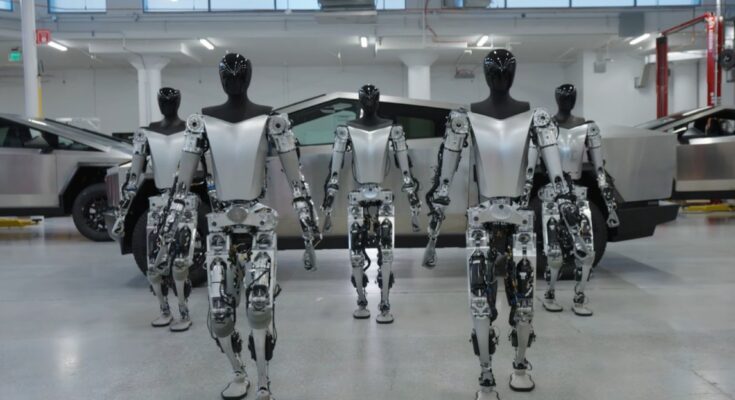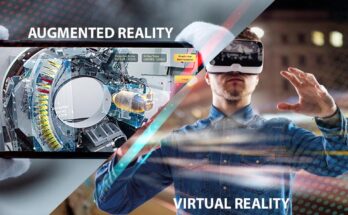The Dawn of a New Era in Robotics
Imagine a world where humanoid robots assist us in our daily lives, from cooking dinner to performing complex industrial tasks. No, this isn’t a scene from a sci-fi movie. This is the future Tesla envisions with its upcoming humanoid robots, targeted for release in 2025. For tech enthusiasts, future innovators, and electric vehicle fans, this development is a significant leap that promises to transform multiple industries. In this blog post, we’ll explore the magic behind these robots, their real-world applications, the challenges ahead, and their potential societal and economic impacts.
Introducing Tesla’s Humanoid Robots
Tesla’s foray into humanoid robotics isn’t just another tech gimmick. It represents a serious step toward enhancing human capability through advanced technology. These robots, designed to resemble humans in form and function, are set to revolutionize how we interact with machines. Elon Musk, Tesla’s visionary CEO, believes these robots can tackle mundane tasks, allowing humans to focus on more creative and complex endeavors.
Musk has always been vocal about his futuristic visions, but Tesla’s humanoid robots mark a tangible move towards making those visions a reality. With a sleek design and capabilities reminiscent of a human, these robots could change the landscape of various sectors, from manufacturing to personal assistance.
This endeavor is not just about creating another gadget; it’s about redefining the role of machines in our society. Imagine a robot capable of learning from its environment, adapting to new tasks, and seamlessly integrating into our daily routines. This is the future Tesla aims to deliver by 2025.
The Technology Behind Tesla’s Robots
The foundation of Tesla’s humanoid robots lies in cutting-edge technology. At the core, these robots will be powered by advanced artificial intelligence (AI) and machine learning algorithms that allow them to learn and adapt over time. These technologies enable the robots to process vast amounts of data, recognize patterns, and make decisions based on their observations.
Machine learning models will help the robots understand and predict human behavior, making them more intuitive and user-friendly. This means that the more time you spend with a humanoid robot, the better it gets at assisting you. This continuous learning loop is what sets Tesla’s robots apart from conventional machines.
In addition to AI and machine learning, Tesla’s robots will incorporate sophisticated hardware, including sensors, actuators, and advanced processors. These components enable the robots to perform delicate tasks with precision, ensuring they can manage everything from cooking a meal to assembling complex machinery. The integration of these technologies promises a seamless blend of human-like dexterity and machine efficiency.
Real-World Applications
The potential applications for Tesla’s humanoid robots are vast and varied. One of the most exciting use cases is in household chores. Imagine coming home to a spotless house, with your robot having taken care of cleaning, cooking, and even laundry. By automating these mundane tasks, Tesla’s robots can free up valuable time for individuals to pursue their passions and hobbies.
In the industrial sector, these robots can significantly enhance productivity. They can work alongside human employees, taking on repetitive and physically demanding tasks, thereby reducing the risk of workplace injuries. For instance, in manufacturing plants, Tesla’s robots can handle assembly line duties with unmatched precision and speed, leading to higher efficiency and quality control.
The electric vehicle market stands to benefit immensely from these robots as well. Tesla’s humanoid robots could assist in the production and maintenance of electric vehicles, making the entire process more efficient. Additionally, these robots could serve as intelligent assistants, capable of diagnosing issues and performing repairs with minimal human intervention, thus revolutionizing the automotive service industry.
The Road Ahead Timeline and Challenges
While the vision for Tesla’s humanoid robots is ambitious, it is not without its challenges. The timeline for their release is set for 2025, but there are several hurdles that Tesla needs to overcome to make this a reality. One of the primary challenges is perfecting the AI algorithms that will power these robots. Ensuring that the robots can learn, adapt, and perform tasks autonomously requires extensive research and development.
Another significant challenge is the integration of hardware and software. Creating a seamless interaction between the robot’s mechanical components and its AI brain is crucial for achieving human-like dexterity. This requires precision engineering and advanced robotics expertise, which Tesla is actively working on.
Additionally, there are regulatory and safety concerns that need to be addressed. Ensuring that humanoid robots operate safely in various environments, from homes to industrial settings, is paramount. Tesla will need to work closely with regulatory bodies to establish guidelines and standards for the safe deployment of these robots.
Impact on Society and the Economy
The introduction of Tesla’s humanoid robots will have far-reaching implications for society and the economy. On one hand, these robots can significantly improve productivity and efficiency across various industries, leading to economic growth. By taking on repetitive and mundane tasks, humanoid robots can allow human workers to focus on higher-value activities, driving innovation and creativity.
However, the widespread adoption of humanoid robots also raises concerns about job displacement. Many fear that robots will replace human workers, leading to unemployment and social unrest. While it is true that certain jobs may become obsolete, it is essential to view this transition as an opportunity to upskill the workforce. By investing in education and training programs, we can equip individuals with the skills needed to thrive in a technologically advanced world.
From a societal perspective, humanoid robots can enhance the quality of life. They can provide assistance to the elderly and disabled, perform dangerous tasks in hazardous environments, and even offer companionship. By integrating robots into our daily lives, we can create a more inclusive and supportive society.
Conclusion
Tesla’s vision for humanoid robots by 2025 is not just a futuristic dream but a tangible reality that is rapidly approaching. These robots, powered by advanced AI and machine learning, have the potential to transform industries, improve productivity, and enhance the quality of life. However, it is crucial to address the challenges and ethical considerations associated with their development and deployment.
As we stand on the brink of this new era in robotics, it is essential for tech enthusiasts, future innovators, and electric vehicle fans to stay informed and engaged. The future of humanoid robots holds immense promise, and by working together, we can ensure that this technology benefits society as a whole.
What are your thoughts on Tesla’s humanoid robots? Do you see them as a boon or a bane? Share your insights and predictions in the comments below. Together, let’s shape the future of technology and innovation.



jutgl8
I kno this site giuves quality baseed posts and additional information, iis there any other weeb psge hich gives these kinds off things in quality?